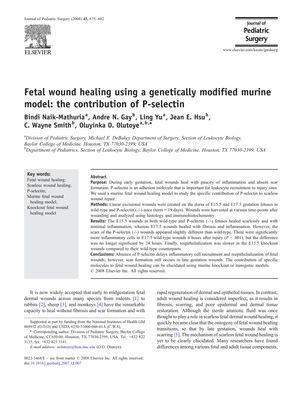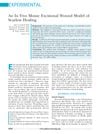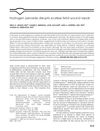Fetal Wound Healing Using a Genetically Modified Murine Model: The Contribution of P-Selectin
April 2008
in “
Journal of Pediatric Surgery
”

TLDR P-selectin is not the only factor that prevents scarring in fetal wound healing in mice.
The study explored the impact of P-selectin, a molecule involved in attracting white blood cells, on the healing of wounds in fetal mice. Researchers created wounds on mice at two different stages of development, E15.5 and E17.5, and compared healing in normal mice and those genetically modified to lack P-selectin. They observed that early-stage fetal wounds healed without scarring in both types of mice, while later-stage wounds developed scars and inflammation. The absence of P-selectin slowed down the initial inflammatory response and the skin's reformation, especially at the earlier stage. However, even with this delay, scarring still occurred in wounds from the later stage of development. The study, which included groups of 5 mice for each comparison, concluded that P-selectin is not the sole factor in preventing scarring in fetal wound healing, suggesting that other elements also play a role in this process.




